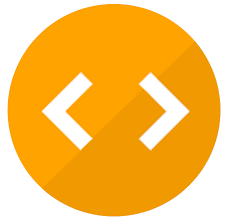Check nearby libraries
Buy this book

This textbook takes an innovative approach to the teaching of classical mechanics, emphasizing the development of general but practical intellectual tools to support the analysis of nonlinear Hamiltonian systems. The development is organized around a progressively more sophisticated analysis of particular natural systems and weaves examples throughout the presentation. Explorations of phenomena such as transitions to chaos, nonlinear resonances, and resonance overlap to help the student to develop appropriate analytic tools for understanding. Computational algorithms communicate methods used in the analysis of dynamical phenomena. Expressing the methods of mechanics in a computer language forces them to be unambiguous and computationally effective. Once formalized as a procedure, a mathematical idea also becomes a tool that can be used directly to compute results. (Publisher's Description)
Check nearby libraries
Buy this book

| Edition | Availability |
|---|---|
|
1
Structure and Interpretation of Classical Mechanics
2015, MIT Press
in English
0262326671 9780262326674
|
zzzz
|
|
2
Structure and Interpretation of Classical Mechanics
2015, MIT Press
in English
0262326655 9780262326650
|
zzzz
|
|
3
Structure and Interpretation of Classical Mechanics
2015, MIT Press
in English
0262326663 9780262326667
|
zzzz
|
|
4
Structure and interpretation of classical mechanics
2014
in English
- Second edition.
0262028964 9780262028967
|
aaaa
|
|
5
Structure and Interpretation of Classical Mechanics
March 19, 2001, The MIT Press
Hardcover
in English
0262194554 9780262194556
|
zzzz
|
|
6
Structure and Interpretation of Classical Mechanics
2001, MIT Press
in English
0262307332 9780262307338
|
zzzz
|
|
7
Structure and Interpretation of Classical Mechanics
March, 2001, MIT Press
Hardcover
in English
0262194554 9780262194556
|
zzzz
|
Book Details
Table of Contents
Edition Notes
Includes bibliographical references and index.
Classifications
The Physical Object
Edition Identifiers
Work Identifiers
Source records
Excerpts
Active exploration on the part of the student is an essential part of the learning experience. Our focus is on understanding the motion of systems; to learn about motion the student must actively explore the motion of systems through simulation and experiment. The exercises and projects are an integral part of the presentation.
That the mathematics is precise enough to be interpreted automatically allows active exploration to be extended to it. The requirement that the computer be able to interpret any expression provides strict and immediate feedback as to whether the expression is correctly formulated. Experience demonstrates that interaction with the computer in this way uncovers and corrects many deficiencies in understanding.
In this book we express computational methods in Scheme, a dialect of the Lisp family of programming languages that we also use in our introductory computer science subject at MIT. There are many good expositions of Scheme. We provide a short introduction to Scheme in an appendix.
Describes the philosophy of the text
Links outside Open Library
Community Reviews (0)
History
- Created May 24, 2019
- 10 revisions
Wikipedia citation
×CloseCopy and paste this code into your Wikipedia page. Need help?
| December 17, 2023 | Edited by Tom Morris | merge authors |
| December 21, 2022 | Edited by MARC Bot | import existing book |
| October 30, 2022 | Edited by ImportBot | import existing book |
| September 28, 2021 | Edited by ImportBot | import existing book |
| May 24, 2019 | Created by MARC Bot | Imported from marc_openlibraries_sanfranciscopubliclibrary MARC record |








